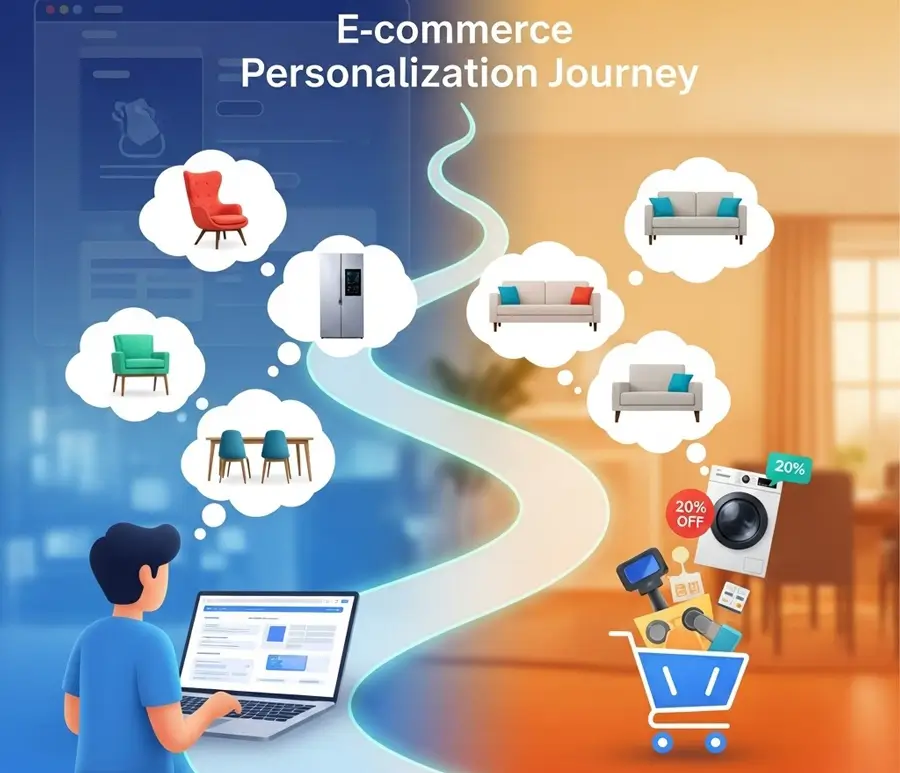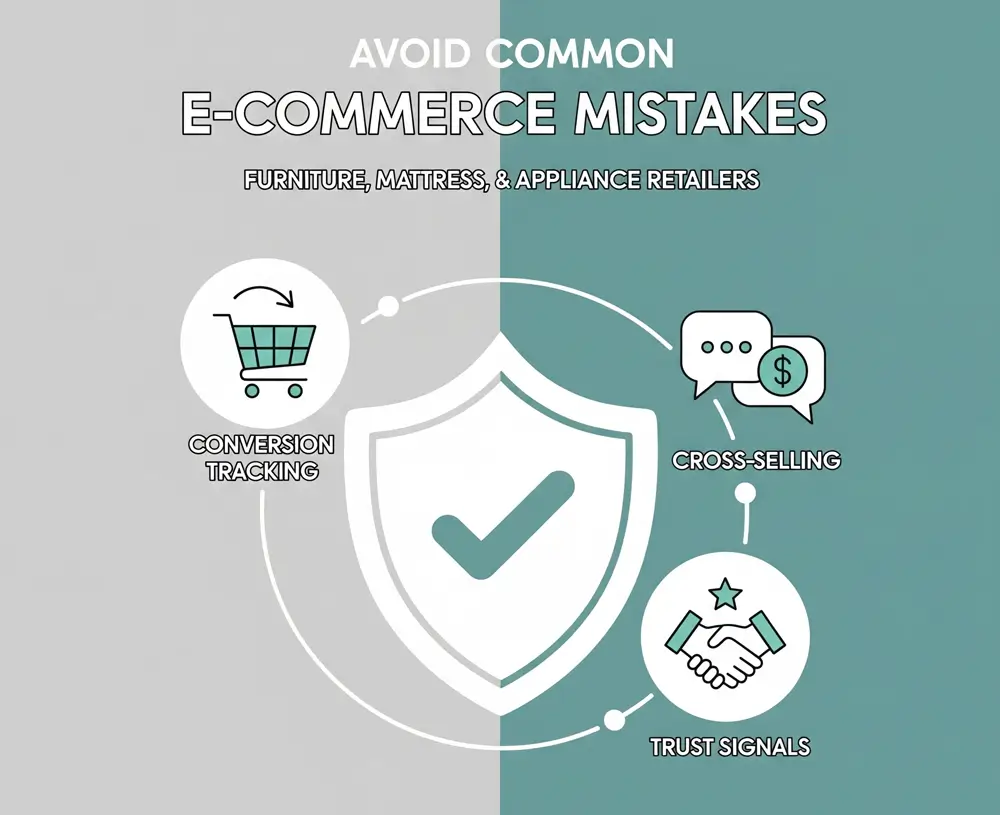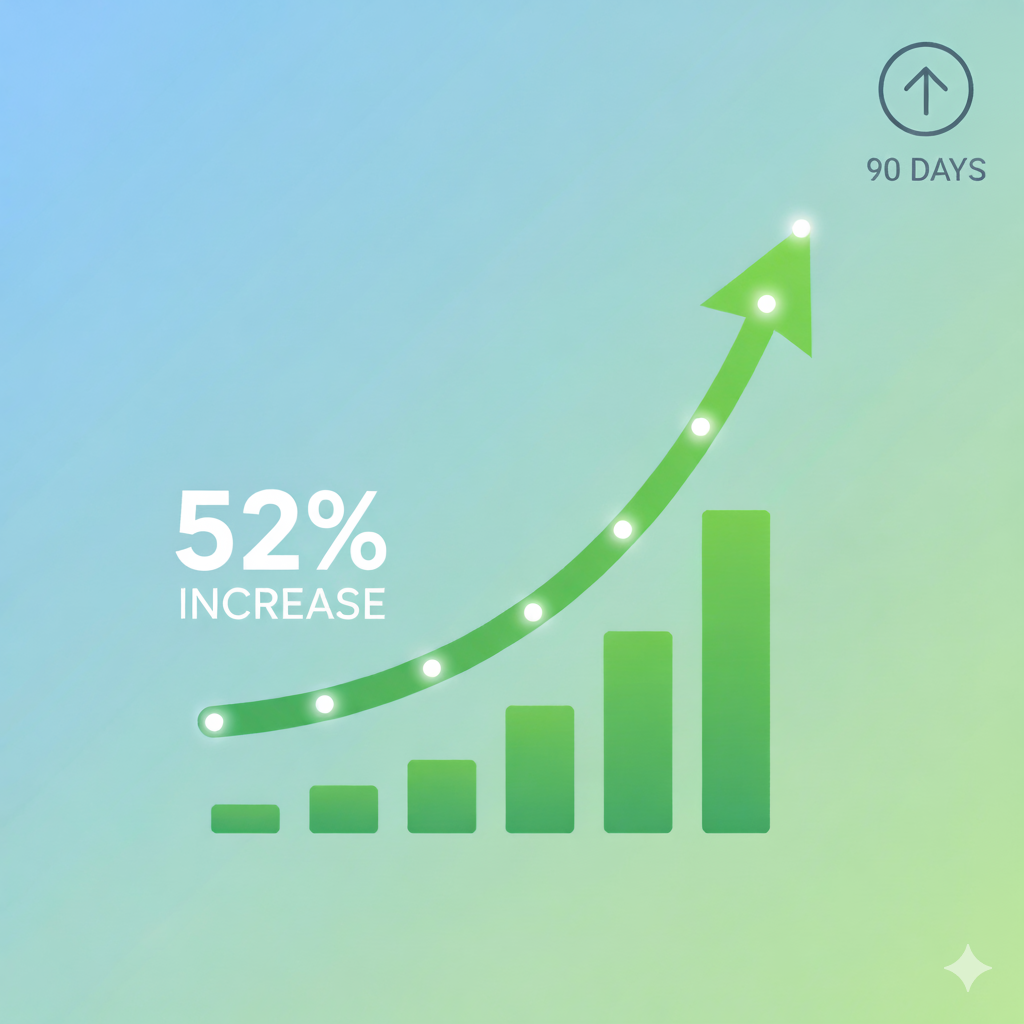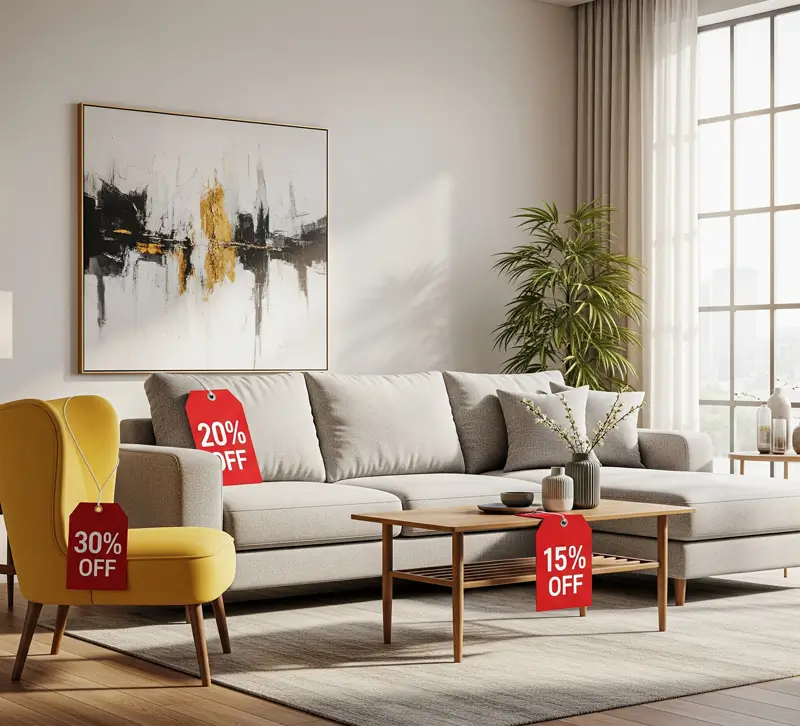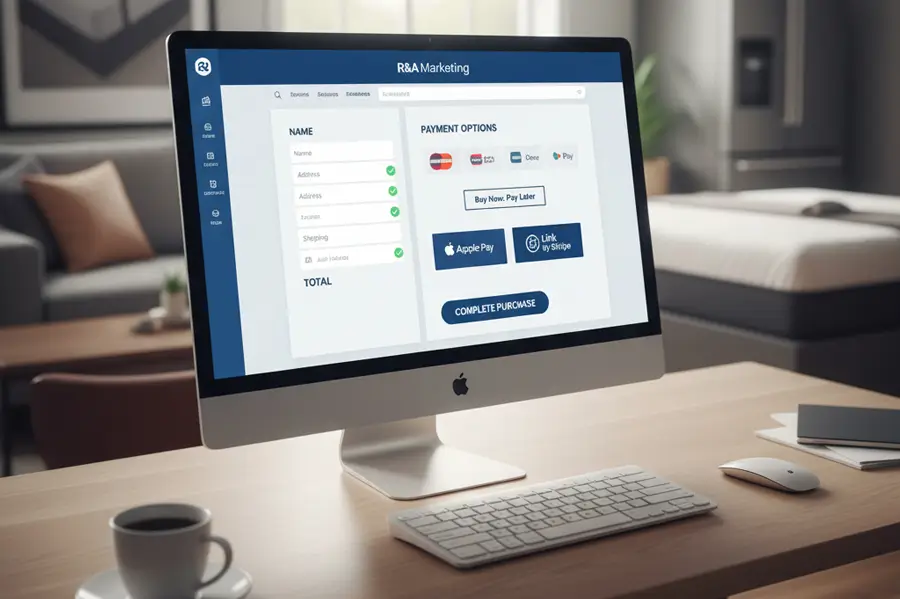Picture this: a potential customer lands on your website. They click on a few sofas, browse your selection of refrigerators, and maybe even add a queen-size mattress to their cart. Then, they disappear. Are they gone for good? Or is this the perfect moment to prove you understand exactly what they’re looking for?
When it comes to ecommerce, personalization isn’t just a nice-to-have, it’s essential for creating a stronger customer-brand bond. It also elevates the seamlessness of your marketing, so consumers come back for more and ideally, spend more.
The numbers don’t lie. Businesses that excel at personalization generate 40% more revenue from these activities than average players, according to McKinsey. It’s no surprise that in 2025, 49% of marketers are allocating their budget to personalization to capture that growth (Madison Logic). But to get personalization right, you have to go beyond just using a customer’s first name in an email.
For furniture, mattress, and appliance retailers, true personalization means creating a shopping experience so intuitive and helpful that it feels like a dedicated sales associate is guiding the customer through their journey. Here’s how to do it.
1. Show Customers the Right Product at the Right Moment
Generic homepages are a thing of the past. Your website should be a dynamic, responsive space that adapts to each visitor. If a customer has spent ten minutes browsing mid-century modern coffee tables, your homepage and “Recommended for You” sections should showcase matching end tables, media consoles, and armchairs—not traditional leather recliners.
How to apply this:
- Furniture: If a user is viewing sectional sofas in neutral colors, use AI-powered tools to recommend area rugs that complement that style or showcase throw pillows and blankets that other customers have purchased with similar sectionals.
- Mattresses: A shopper looking at king-size memory foam mattresses should see recommendations for other king memory foam options, adjustable bases that are compatible, and cooling pillows that enhance the sleep experience.
- Appliances: When a customer views a specific stainless steel, French-door refrigerator, your site should dynamically display matching dishwashers, ranges, and microwaves from the same brand or with similar finishes, making it easy to build a complete kitchen suite.
2. Promote Offers Tailored to Their Shopping Habits
Every customer is motivated by different factors. Some are brand loyal, others are hunting for a bargain, and many are just waiting for the right nudge. By tracking shopping habits, you can send promotions that are far more likely to convert.
How to apply this:
- The Abandoned Cart: A customer adds a high-efficiency washer and dryer pair to their cart but doesn’t check out. Don’t just send a generic “You left something behind!” email. Send a targeted follow-up that highlights a key feature, like “Still thinking it over? This laundry pair comes with our free 5-year warranty.” If they still don’t buy, a follow-up offer for free delivery or a small discount can be the final push they need.
- Brand Affinity: Has a customer previously purchased a Bosch dishwasher? When new Bosch kitchen appliances go on sale, they should be the first to know. A subject line like, “Complete Your Bosch Kitchen Suite and Save” is incredibly effective.
- Purchase Cycle: The average mattress is replaced every 7-10 years. If a customer bought a mattress from you eight years ago, it’s the perfect time to launch a targeted campaign: “Is It Time for a Sleep Upgrade? See What’s New in Comfort Technology.”
3. Use Location and Behavior Targeting to Get Specific
Where your customer is located and how they navigate your site are powerful pieces of data. Use them to provide hyper-relevant information that removes friction from the buying process.
How to apply this:
- Geo-Targeting: A shopper in Sunbury, Ohio, doesn’t need to know about a clearance event in another state. Instead, show them a banner that says, “In a hurry? This sofa is in stock and available for delivery from our Columbus warehouse tomorrow!” Promoting local delivery, “white glove” assembly services, or in-store pickup options for their specific area makes the logistics feel simple and immediate.
- Behavioral Cues:
- Did a user click on your “Financing” page? Display a prominent pop-up or banner on their next page view detailing your “12 Months No Interest” offer.
- Has someone spent significant time comparing appliance packages? They’re likely a new homeowner or remodeler. Target them with “Bundle & Save” promotions to help them complete their project for less.
- If a visitor is reading your mattress buying guide, invite them to a live chat with a “Sleep Expert” to get personalized recommendations.
4. Avoid Common Pitfalls and Keep It Human
Personalization is a powerful tool, but when done poorly, it can feel intrusive or just plain wrong. The goal is to be a helpful guide, not an omniscient observer.
How to apply this:
- Don’t Be Creepy: There’s a fine line between helpful and invasive. A “We think you’ll like this” recommendation is great. A “We saw you stared at this Maytag refrigerator for 4 minutes and 12 seconds” email is not. Keep the tone natural and helpful.
- Use Purchase Data Wisely: Nothing is more annoying than being served ads for a dining set you just purchased last week. Use your sales data to exclude recent buyers from campaigns promoting those same items. Instead, pivot to complementary products, like a new buffet or server.
- Focus on Helpfulness: The ultimate goal of personalization is to make the customer’s life easier. Frame your efforts around that. “Need help measuring your space for a new sectional? Here’s our guide.” This approach builds trust and positions your brand as a valuable partner, not just a retailer.
By moving beyond basic personalization and embracing a truly adaptive ecommerce strategy, you can create a shopping experience that not only converts browsers into buyers but also fosters the kind of brand loyalty that keeps them coming back for years to come.


